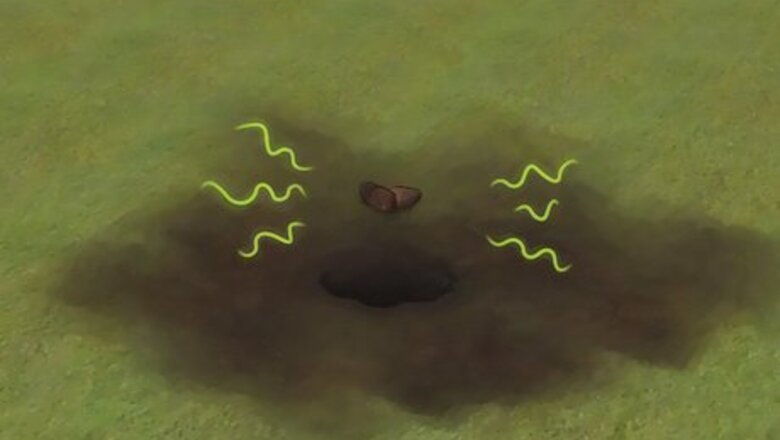
views
- Try non-lethal remedies like scattering pet droppings, planting gopher spurge, creating noise, setting a humane trap, or using sewage-based fertilizer.
- Use planter boxes that have "hardware cloth" fastened to the bottom. (Hardware cloth is a sturdy rust-resistant metal mesh with 1/4" or 1/2" holes)
- Use lethal remedies with care. You can try burrow blasters, fumes from your car exhaust, poisons, flood the burrow with water, or hire a professional.
Using Non-Lethal Remedies
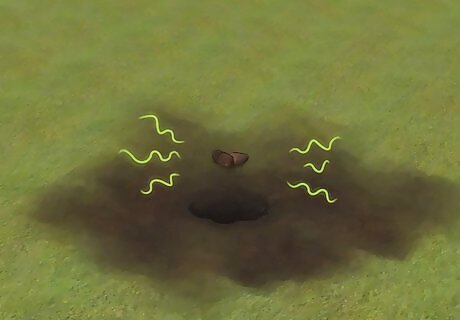
Scatter some of your pet's droppings. Instead of tossing your cat litter or your dog's poop into the trash, put it into the gopher tunnels instead. You won't need a lot; one or two droppings will be enough. Cats and dogs are gopher predators. When gophers smell the poop, they'll think that a predator is nearby.
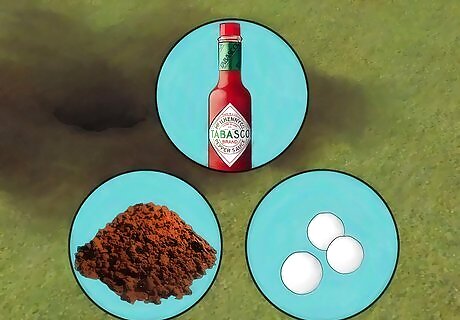
Use smells that gophers don't like. Gophers have very sensitive noses. If they smell something they don't like, they may leave. Here are some scents that are bound to set gophers scurrying: Fish. The next time you go fishing, save some of the scraps (such as fins) and place them in or next to the tunnels. Castor oil. Dilute castor oil with some water and spray it into the tunnels, You can also try dropping some castor oil capsules into the tunnels instead. UNREFINED castor oil is toxic. Coffee grounds. After you have finished brewing a cup of coffee, sprinkle the grounds into the tunnels and cover them with soil. You can also mix the coffee grounds into your soil. It will help repel the gophers while fertilizing your plants. Dryer sheets. Take a few dryer sheets and tuck them into the holes. The strong smell will send the gophers away. Mothballs. Drop a couple of mothballs into the tunnel, and cover the opening with plastic. Gophers don't like the smell of naphthalene, which is in mothballs. It is toxic to people and animals, however. Tabasco sauce. Mix together a few drops of peppermint essential oil, 1 teaspoon of Tabasco sauce, ½ cup (120 milliliters) of castor oil, and 1 cup (240 milliliters) of water. Soak some cotton balls in the mixture, then drop them into the tunnels.
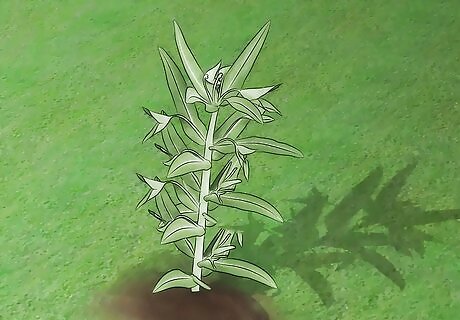
Plant gopher spurge. This plant, also known as "Euphorbia Lathyris," is a common gopher repellent. Buy a few from your local nursery and plant them in your yard. Focus on the gopher infested areas. Other plants that gophers seem to dislike include: castor beans, daffodils, and marigolds. Some people find that the oleander plant is also an effective gopher repellent. Consider planting oleander around the perimeter of your garden.
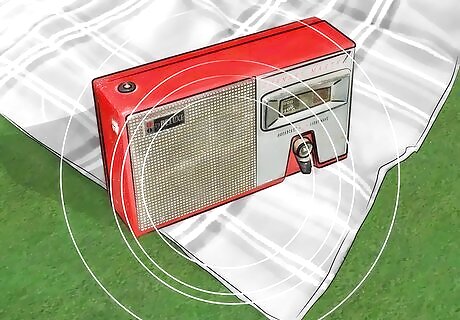
Create a noisy environment. Like many animals, gophers dislike a lot of noise. If you find gophers in your yard, try using something that makes noise, such as: Portable radio. Find a cheap, battery-operated radio. Turn it on and stick it into a plastic, resealable bag. Tuck the bag into the gopher tunnel. The plastic bag will protect the radio from getting wet. Wind chimes. They are pretty and create a soft, chiming noise that gophers seem to dislike.
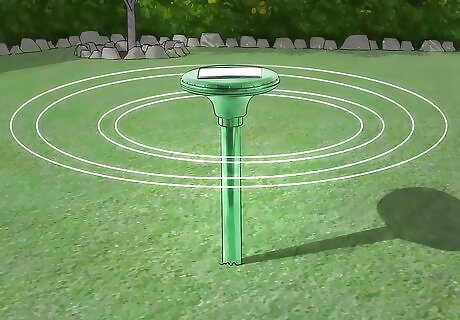
Use vibrating stakes. Most vibrating stakes are set deep into the ground, and are completely invisible above ground. They are usually battery-operated. You can buy some that are wind operated. These ones stick above ground and are ornamented with a windmill. You can buy them online, and in certain nurseries or home improvement stores. To insert the vibrating stake: Dig a hole into the ground. Make sure that it is deep enough to fit the stake. Slip the stake into the hole. Fill the hole with more dirt. Avoid hammering or pushing the stake directly into the soil, as this can damage it.
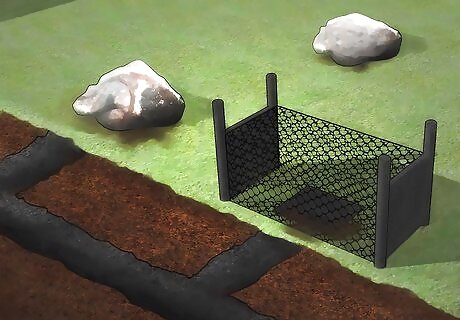
Set a gopher trap. Cover all holes with soil, except for one or two. These should be the entrance and exit to the main tunnel. Wash the trap using unscented soap and warm water. Put on a pair of latex gloves, and insert the traps into the tunnel, with the open end facing inside the tunnel. Once you have placed the trap, cover the area with a sheet of black plastic or burlap so that no light shines into the hole. The main tunnel is usually 6 to 12 inches (15.24 to 30.48 centimeters) underground. You can find it by poking the ground around a mound, on the same side as you see freshly-dug-up earth. Use a weeder or wooden spoon handle. Keep poking until you feel the soil "give." Some people find that rubbing the trap with fresh rosemary helps further disguise the smell of humans. Once you have trapped the gopher, either call up animal control or release it into the wilderness.
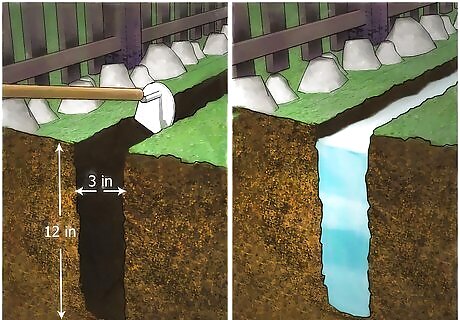
Use a sewage-based fertilizer. Whenever the soil gets wet, the chemicals in the fertilizer will leach into the soil, and repel the gophers. Avoid using this if you have pets, children, or plan on protecting fruits, vegetables, or herbs. Put on a pair of latex gloves, then follow the steps below: Dig a trench about 3 inches (7.62 centimeters) wide and 12 inches (30.48 centimeters) deep around the area you want to protect. Consider digging a few extra trenches and have them meet in the center of the area you are protecting. Fill the trench(s) with the fertilizer. Cover the trench with 1 inch (2.54 centimeters) of soil.
Using Lethal Remedies

Use gopher burrow blasters or detonators to smoke them out. They may also be labeled as gopher flares. They fill the tunnels with a mixture of propane and oxygen. This kills the gophers. Buy a few, and read the instructions included, as each brand might be a little different. Insert the flare into the tunnel and wait. Burrow blasters/detonators will also work on: badgers, ground hogs, pocket gophers, prairie dogs, voles, and other burrowing animals.
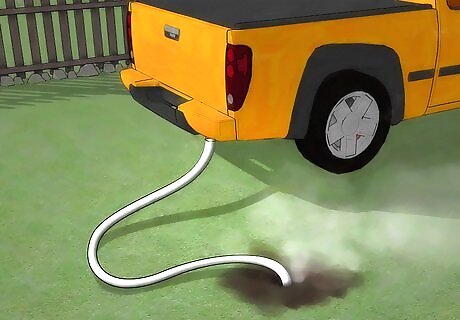
Gas them using your car's exhaust. Cover all of the holes up with soil except for one. Stick one end of a garden hose into the end of your car's exhaust pipe, and the other end of the hose into the remaining tunnel. Turn your car on for about 15 to 30 minutes. The hose will flood the tunnel with poisonous carbon monoxide.
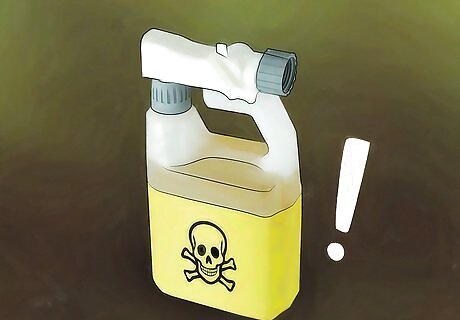
Use poisons with care, especially if you have pets. When a gopher eats the poison, its body will keep that poison. This means that if your cat or dog eats the dead gopher, he or she will be poisoned as well. Because of this, you might want to stay away from poisons containing strychnine. DO NOT USE ANTICOAGULANTS!! They do cause fatal internal bleeding in the gopher, but anticoagulants (example-- Warfarin) don't break down right away, and often do not kill right away. The result? Pets and natural predators catch the poisoned gophers (and other rodents) more easily--but then THEY become ill or are killed. Keep all poisons away from children and other animals. Consider other methods if you have pets at home. Always wash your hands after handling the poison. To use a Warfarin type bait / pellet poison, you poke down about 1 foot (0.3 m) from a recent dirt mound to find a tunnel. Gently open a small hole, pour some pellets in, cover the hole without collapsing the tunnel.
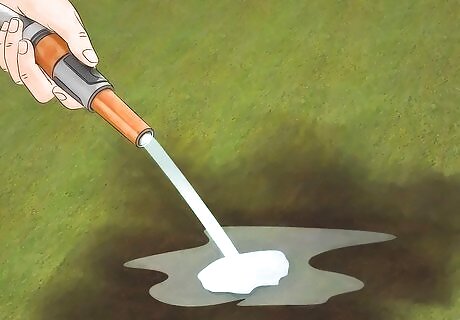
Try using a garden hose to flood the gopher tunnel with water. This may not work for your situation, but if you've tried other avenues without success, consider it. Keep in mind that, depending on how deep the tunnels are, your yard could get very muddy. Cover up most of the gopher holes, and stick the end of a garden hose into a tunnel. Let the water run for up to 30 minutes. Kill or trap any escaping gophers. Make sure that you are indeed dealing with gophers. Ground moles love the damp. If you have ground moles and flood you are flooding the tunnel, you'll only make your yard more inviting.
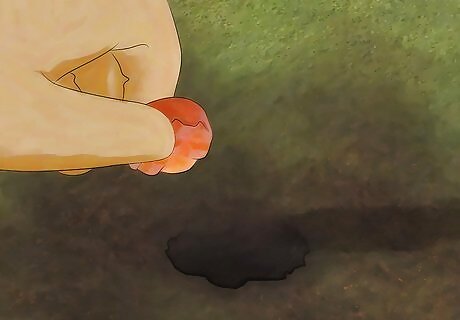
Try leaving some fruit-flavored gum or other soft, chewy candy in their tunnels. Many homeowners find that the Juicy Fruit brand works quite well, although there is no scientific research as to why. Put on a pair of latex gloves first, so that your scent doesn't get on the gum. Unwrap the gum and drop it into the gopher hole. The gopher will eat it and die in its burrow.
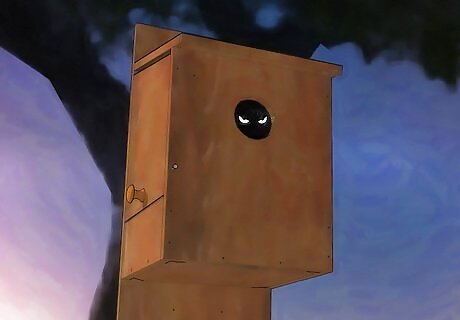
Release a predator. This can be as simple as letting your cat or dog out into the yard. Keep in mind, however, that this also depends on the predator's hunting ability and willingness to hunt. Not all cats and dogs will get gophers, and their smell alone won't always help. You need a dedicated and skilled cat or dog. If you have a cat who can catch and kill gophers, you are in luck. As for dogs, some dogs you'd never think were ratters can be very good. But if you want to be sure you're adopting a dog who'll hunt gophers, try to get two Jack Russell Terriers (both should be altered to prevent puppies). Two terriers will tag team a gopher. They'll wait on opposite sides of a hole, and when the gopher emerges one or the other will get it. If you have a friend with JRT's and your yard is fenced and dog-escape-proof, you can ask to borrow them, too. Set up some owl boxes in trees to invite owls into your yard. The owls will prey upon the gophers. You might not want to do this, however, if you have small dogs or cats. Buy some non-venomous snakes and set them loose in your yard. Keep in mind that it may take up to a month for the snake to clear our your yard. If you have a very big gopher problem, consider getting two snakes. Get a gopher snake with caution. While a gopher snakes are not considered to be venomous, they may still hurt a cat or smaller dog.

Hire a professional. A professional exterminator can use Aluminum Phosphide, which reacts with moisture in the air and soil to produce fast-acting highly toxic phosphine gas. There is no residual poison, and there is no secondary poisoning. If your pet digs up and eats the gopher carcass, there is not a chance that your pet will get poisoned. This is the most expensive option, but many exterminating companies offer guarantees.
Decreasing the Food Supply
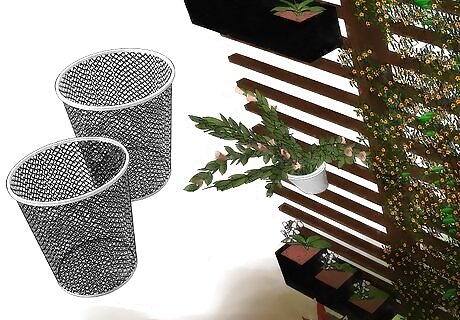
Decrease the food supply or prevent the gophers from getting to it. The less gophers have to eat in your garden, the sooner they will move on to other yards. This does not necessarily mean that you have to get rid of all your plants, vegetables, and flowers. If you can keep the gophers from getting to your tasty plants, they will move on. Here are some ideas to get you started:
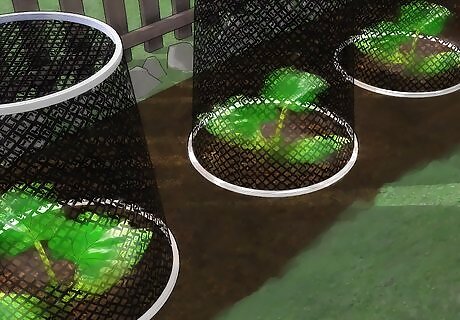
Use gopher baskets to protect your plants. Plant vegetable and other vulnerable plants in gopher baskets. These are baskets made of chicken wire that protect the young roots until they are well established.
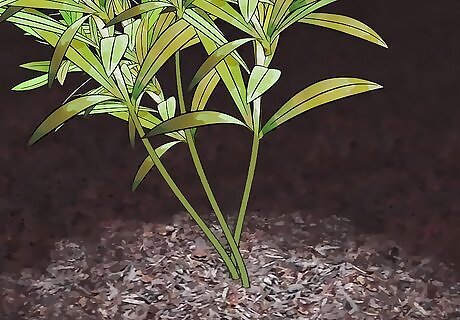
Use mulch as a buffer between the soil gophers burrow in and your plants. Gophers seem to dislike the smell and taste of mulch.
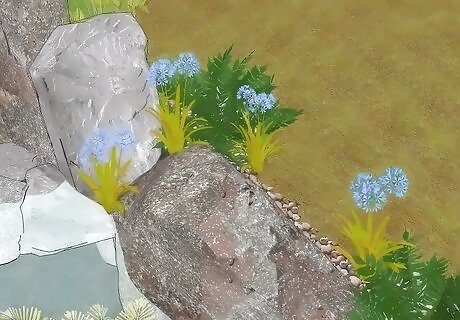
Limit the amount of plants in your garden. Instead, consider planting a rock garden or a water garden. Water gardens can be very beautiful, and you can place aquatic plants in them.
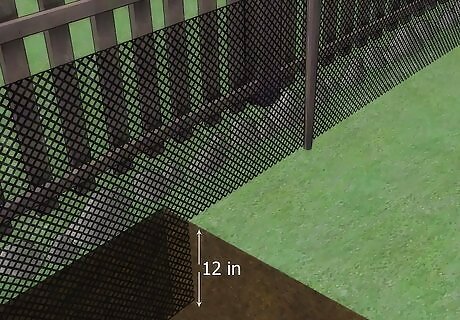
Build a fence, but make sure that part of it extends underground. While gophers are good at burrowing, they are bad at climbing. Buy some wire mesh from your local nursery or home improvement store. Place it around your garden. Make sure that it extends at least 12 inches (30.48 centimeters) underground. This will prevent the gophers from burrowing under it. Make sure that the fence is a few inches tall above the ground. Try to make the underground part of the fence curve away from your plant bed in an "L" shape. This will confuse the gophers, and prevent them from digging deeper (below the bottom of your fence.Expert Trick: Instead of constructing a whole fence, you can line the bottom of plant beds with 1/2-inch hardware cloth. Use two layers for extra durability. You can easily find hardware cloth at a local home improvement store.
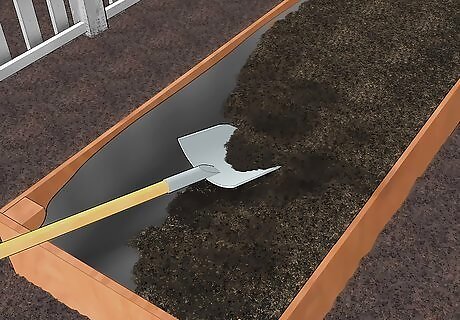
Build some raised plant beds instead. This will involve building some planters and filling them with soil. You can then place everything into those planters. For ultimate security, consider lining the bottom of your planters with chicken wire to prevent the gophers from digging under the planter walls and into the planter itself.











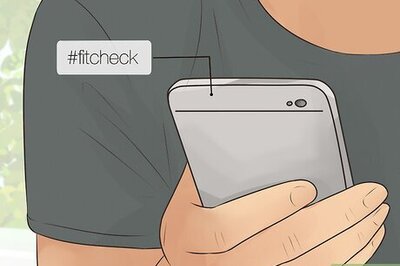
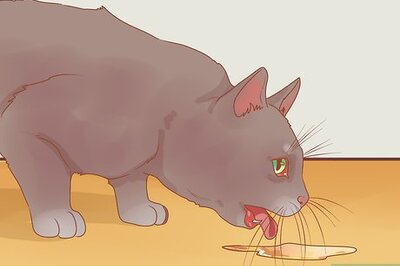


Comments
0 comment